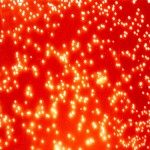Link to HAL – pasteur-04193814
Link to DOI – 10.24072/pcjournal.307
Peer Community Journal, 2023, 3, pp.e76. ⟨10.24072/pcjournal.307⟩
Background Diphtheria, caused by Corynebacterium diphtheriae, reemerges in Europe since 2022. Genomic sequencing can inform on transmission routes and genotypes of concern, but currently, no standard approach exists to detect clinically important genomic features and to interpret emergence in the global C. diphtheriae population framework. Methods We developed the bioinformatics pipeline DIPHTOSCAN (available at https://gitlab.pasteur.fr/BEBP/diphtoscan) to extract from genomes of Corynebacteria of the diphtheriae species complex, medically relevant features including tox gene presence and disruption. We analyzed 101 human C. diphtheriae isolates collected in 2022 in metropolitan and overseas France (France-2022). To define the population background of this emergence, we sequenced 379 additional isolates (mainly from France, 2018-2021) and collated 870 publicly-available genomes. Results The France-2022 isolates comprised 45 tox-positive (44 toxigenic) isolates, mostly imported, belonging to 10 sublineages (<500 distinct core genes). The global dataset comprised 245 sublineages and 33.9% toxpositive genomes, with DIPHTOSCAN predicting non-toxigenicity in 16.0% of these. 12% of the global isolates, and 43.6% of France-2022 ones, were multidrug resistant. Convergence of toxigenicity with penicillin and erythromycin resistance was observed in 2 isolates from France-2022. Phylogenetic lineages Gravis and Mitis contrasted strikingly in their pathogenicity-associated genes. Conclusions This work provides a bioinformatics tool and global population framework to analyze C. diphtheriae genomes, revealing important heterogeneities in virulence and resistance features. Emerging genotypes combining toxigenicity and first-line antimicrobial resistance represent novel threats. Genomic epidemiology studies of C. diphtheriae should be intensified globally to improve understanding of reemergence and spatial spread.

